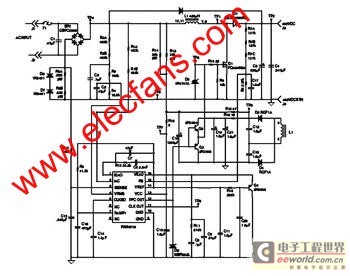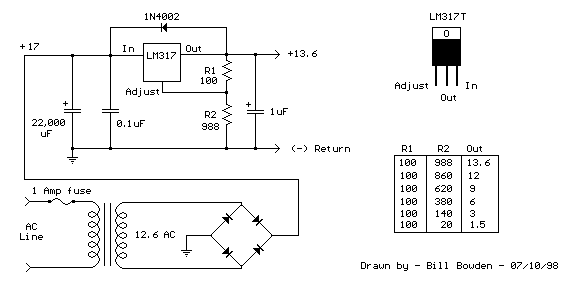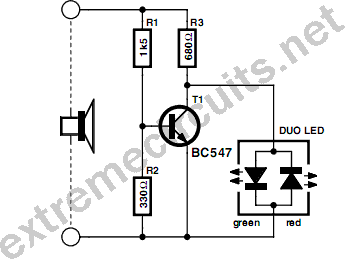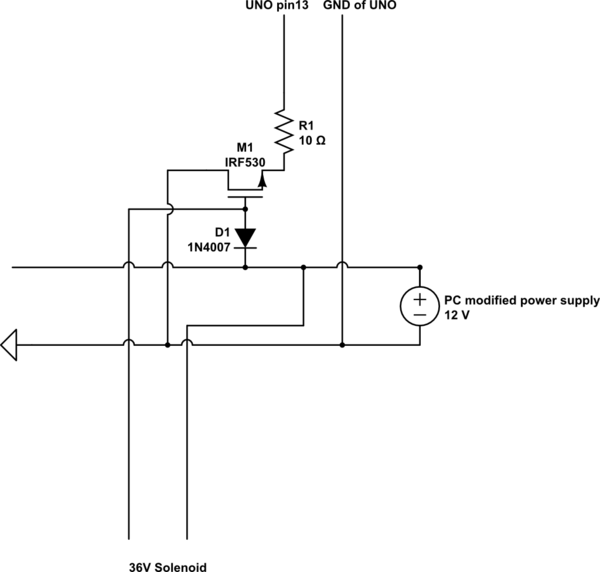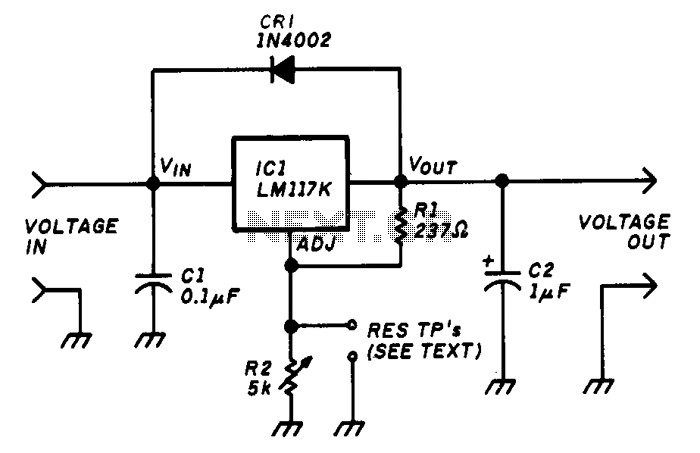
3V to 24V Variable Power Supply
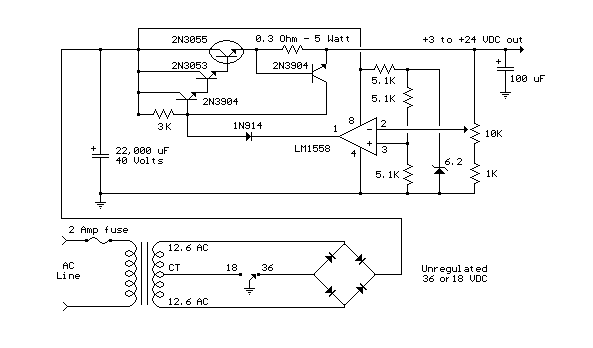
This variable-regulated power supply operates within a voltage range of 3V to 24V, allowing adjustment from 3V to 25V. It is current limited to 2 amps, with the possibility of increasing the limit to 3 amps.
The described power supply features a variable output voltage that can be adjusted using a potentiometer or a similar control mechanism. The output voltage range of 3V to 25V provides versatility for powering various electronic devices and circuits, making it suitable for applications such as testing, prototyping, and powering low-voltage equipment.
The current limiting feature ensures that the output does not exceed a specified threshold, protecting both the power supply and the connected load from potential damage due to excessive current draw. The standard limit is set at 2 amps, but it can be configured to allow a maximum of 3 amps if required. This capability is particularly beneficial in scenarios where the load may vary or in applications that require a higher current momentarily.
To implement this power supply, a voltage regulator circuit, such as an adjustable linear voltage regulator (e.g., LM317), could be utilized. This regulator allows for easy adjustment of the output voltage by varying the resistance of the feedback network. Additional components such as capacitors may be included to stabilize the output and filter any noise.
Furthermore, incorporating a heat sink with the voltage regulator is advisable to dissipate heat generated during operation, especially when operating at higher currents. The power supply design may also include protection features such as over-voltage and over-temperature shutdown to enhance reliability and safety during operation.
Overall, this variable-regulated power supply provides a robust solution for a wide range of electronic applications, ensuring adjustable voltage output and current limiting for safe and efficient operation.This 3V to 24 volt variable-regulated power supply can be adjusted from 3 to 25 volts and is current limited to 2 amps as shown, but may be increased to 3.. 🔗 External reference
The described power supply features a variable output voltage that can be adjusted using a potentiometer or a similar control mechanism. The output voltage range of 3V to 25V provides versatility for powering various electronic devices and circuits, making it suitable for applications such as testing, prototyping, and powering low-voltage equipment.
The current limiting feature ensures that the output does not exceed a specified threshold, protecting both the power supply and the connected load from potential damage due to excessive current draw. The standard limit is set at 2 amps, but it can be configured to allow a maximum of 3 amps if required. This capability is particularly beneficial in scenarios where the load may vary or in applications that require a higher current momentarily.
To implement this power supply, a voltage regulator circuit, such as an adjustable linear voltage regulator (e.g., LM317), could be utilized. This regulator allows for easy adjustment of the output voltage by varying the resistance of the feedback network. Additional components such as capacitors may be included to stabilize the output and filter any noise.
Furthermore, incorporating a heat sink with the voltage regulator is advisable to dissipate heat generated during operation, especially when operating at higher currents. The power supply design may also include protection features such as over-voltage and over-temperature shutdown to enhance reliability and safety during operation.
Overall, this variable-regulated power supply provides a robust solution for a wide range of electronic applications, ensuring adjustable voltage output and current limiting for safe and efficient operation.This 3V to 24 volt variable-regulated power supply can be adjusted from 3 to 25 volts and is current limited to 2 amps as shown, but may be increased to 3.. 🔗 External reference
